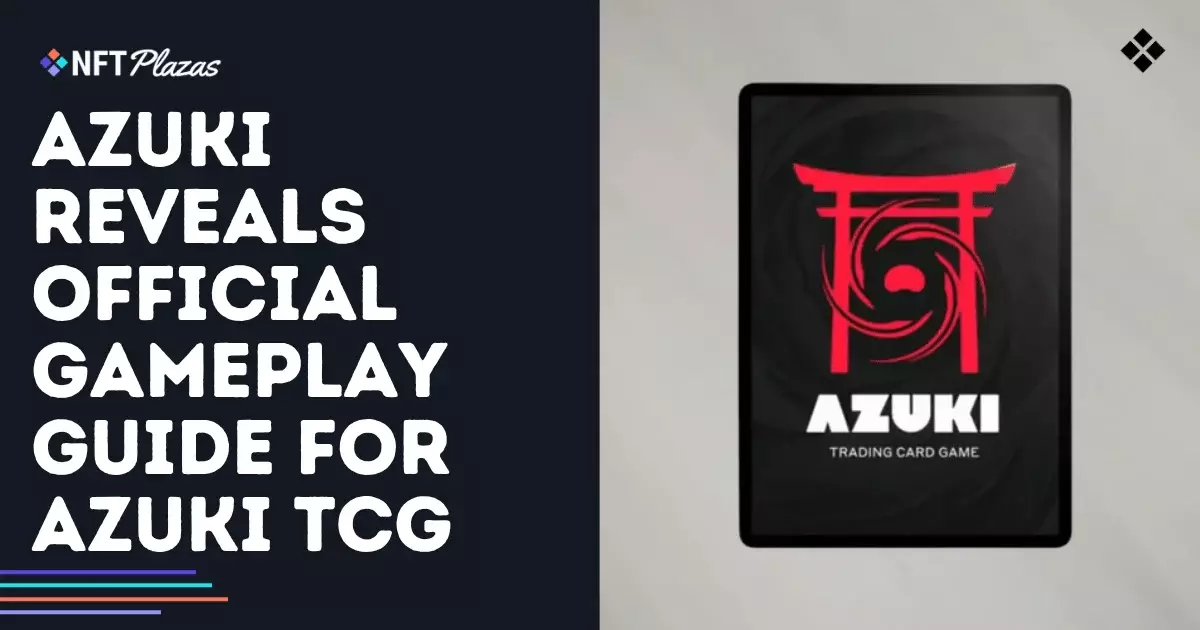Azuki’s recent release of a gameplay guide for its upcoming blockchain-based trading card game sparks curiosity, but a closer look reveals numerous issues that threaten the project’s credibility and potential success. While the game’s structural design may seem innovative on paper, the absence of substantive integration with blockchain technology raises doubts about whether it truly leverages the strengths of Web3. Instead, it appears to be a conventional card game cloaked in a digital veneer—capitalizing on Azuki’s existing brand, yet offering little to justify the hype surrounding its blockchain underpinnings. This disconnect between branding and functionality could limit the game’s appeal to the broader NFT gaming community, which expects genuine innovation and utility, not superficial extensions.
Superficial Blockchain Integration and Overreliance on Traditional Mechanics
One glaring issue is Azuki’s failure to clearly define how its game capitalizes on blockchain advantages. Blockchain-native projects typically tout features like provable rarity, true ownership, and decentralized integrity. However, the guide explicitly omits any mention of digital assets, tokens, or ownership mechanics directly tied to blockchain. It suggests that, despite branding as a Web3 project, the game remains an entrenched traditional card game with minimal crypto relevance. This is a fundamental disconnect—those invested in NFT projects seek transparent, tamper-proof assets fueling gameplay, not just aesthetic overlays. Azuki’s cautious approach could be perceived as mere branding; a missed opportunity to innovate and cement its place in the Web3 gaming ecosystem.
Gameplay Mechanics: Familiar Yet Restrictive
On the surface, Azuki’s game mechanics seem typical of existing trading card games, but closer inspection reveals potential limitations. The game design features familiar structures—turn-based play, faction decks, and resource management—yet it introduces the IKZ resource system that appears overly simplified. This resource system, based on tapping IKZ cards, seems more like a traditional mana-like mechanic rather than a truly revolutionary blockchain-enabled resource, which should, in theory, offer players greater control and true ownership of in-game assets. Furthermore, the game’s win conditions—reducing the opponent’s health or depleting decks—mirror classic formats and lack innovative layered mechanics that could set Azuki apart. It’s a safe yet uninspired template that may struggle to attract players seeking fresh experiences or real asset value.
The Tournament Hype Versus Long-Term Vision
Hosting an in-person tournament in Los Angeles in July 2025 seems like a strategic move to generate buzz, but the timing and execution raise concerns. Is this just a marketing stunt capitalizing on Azuki’s existing popularity? Without concrete blockchain integrations, this event risks being a standard cosplay or competitive card game showcase rather than a genuine celebration of NFT innovation. If the game does not evolve to incorporate blockchain functionalities—such as true ownership of digital assets, decentralized marketplaces, or player-controlled economies—the tournament risks being an irrelevant spectacle rather than a landmark event in Web3 gaming. Enthusiasts and skeptics alike are wary of hollow hype when the core mechanics resemble conventional card games that offer no real digital benefits.
Is Content or Marketing Driving the Hype?
It’s apparent that Azuki is leaning heavily on its brand recognition and the allure of anime-inspired art to drive interest. The gameplay guide feels more like a marketing brochure than a comprehensive insight into a revolutionary game. The absence of detailed tokenomics, community-driven features, or blockchain utility makes their claims of Web3 integration seem superficial. This approach, while perhaps understandable in early development stages, risks alienating the core NFT audience who seek genuine ownership and platform independence. If Azuki doesn’t swiftly pivot to embed true blockchain mechanics into its game, it will merely be another branded card game in a crowded market—destined to be forgotten once the initial hype dies down.
The Future of the Azuki TCG: Promise or Pitfall?
In its current state, Azuki’s TCG faces an uphill battle. The project’s reliance on traditional gameplay mechanics combined with broad, non-specific promises of blockchain functionality does little to inspire confidence. For the game to carve out a meaningful niche in the competitive NFT gaming landscape, it must go beyond surface-level branding and deliver concrete decentralization, player ownership, and utility. Until then, it risks being perceived as yet another failed attempt to leverage popular IP without delivering the innovation that NFT enthusiasts demand. The upcoming tournament might spark some short-lived excitement, but lasting success will depend on Azuki’s ability to incorporate meaningful blockchain features, offering players tangible assets and true digital sovereignty. Until that happens, the project remains more hype than hardware—an empty shell in a market hungry for genuine disruption.


Leave a Reply